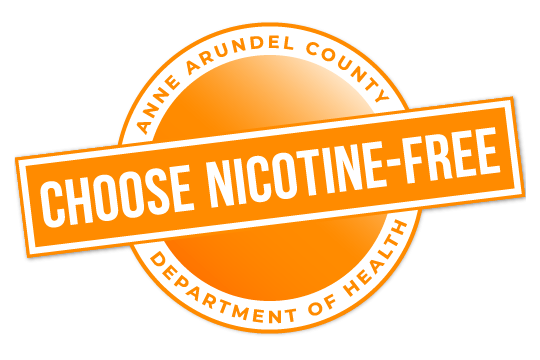Nicotine in tobacco is addictive, and it keeps people smoking long after they want to stop. Teens who start smoking at a younger age are more likely to still smoke in their 20s than teens who start at age 18 or 19. However, individuals who start smoking at any point in adolescence are more likely to still smoke as adults compared to individuals who never smoked in adolescence. Smoking is hard to quit: fewer than one in ten adults who smoke cigarettes succeed in quitting each year.
Helpful Hints to Stay Clear of Smoking or Vaping
The best way to not smoke or vape is to never start. Learn how to stay away from nicotine and stay cool. Here are some ideas to help you stand up to smoking and vaping.
- Say No to Pressure
If your friends or kids in your neighborhood want you to smoke or vape with them, learn to say “No.” You can be direct: “No I don’t want to”; change the subject: “Let’s play basketball”; or try a comeback line, such as: “I like my lungs.” Avoid situations where you know they will want to smoke or vape. - Pick Up Something Else
There are so many things to do besides smoking or vaping. Try playing a sport. Pick up a good magazine. Listen to some music and dance. Go for a walk. They’re all cooler and healthier than smoking or vaping! - Talk to Someone You Trust
If you’re not sure about smoking or vaping, talk to someone you trust – your mom, dad, brother, your best friend or a favorite teacher. Tell them what’s up. Talk to them about how you’re feeling and ask for their help! - Take Action
During the Choose Nicotine Free event you can learn how to tell people about the dangers of smoking or vaping. Create posters, organize a No Smoking Day at your school, or think of something original. It can be big or small, serious or crazy! But whatever you do, let people know that nicotine is bad and nobody should use it. - Help Others Quit
If you know people who smoke or vape, spread the word and help a friend.
Anti-Tobacco Marketing Videos
Big tobacco companies try to sway kids into thinking smoking is cool by using celebrities in their ads. They portray smoking as a way to make you beautiful, popular and stronger. To combat this messaging, educate your students about the big tobacco companies and their marketing tricks. There are also videos to counter the tobacco companies’ marketing. Below you will find a list of videos to educate your students about the dangers of smoking and encourage them to live tobacco-free.
Tips From Former Smokers Campaign is found through the Centers for Disease Control and Prevention (CDC). The campaign helps to shed light on the dangers of smoking by sharing stories of real people who are living with the health effects of smoking and secondhand smoke. You can find videos below or go online to YouTube and type "Tips From Former Smokers Campaign" into the search engine.
The Truth Initiative works to reduce smoking and the use of tobacco products among youth and young adults. This is a national counter marketing campaign to prevent tobacco use. You can find suggested videos below or go online to YouTube and search "Truth Campaign" or "Truth Orange."
Disclaimer: Screen the content of the videos to make sure it supports your target audience. Various videos may pop up on the side bar with information that is not correct. Administrative approval is suggested prior to using these videos.
Electronic Smoking Devices (ESD)
Electronic smoking devices are battery-operated devices that produce an aerosol by heating a liquid. The liquid contains nicotine, flavors and harmful chemicals. These devices are called by many names, including e-cigarettes, e-cigs, vapes, e-hookah, vape pens, mods, tank systems or pod-based systems. They come in different sizes, shapes and types of batteries. These devices are the most popular among youth in Anne Arundel County.
Electronic smoking devices contain harmful chemicals, such as heavy metals, nicotine, benzoic acid, diacetyl and other chemicals that can lead to cancer. Products can also contain ultrafine particles and volatile organic compounds. Many younger users are unaware of the health risks associated with electronic smoking devices. In the fall 2019, the national Centers for Disease Control and Prevention (CDC) partnered with local and state health departments to investigate e-cigarette and vaping associated with severe lung illnesses.
More information:
Tobacco Products
Tobacco products contain nicotine, carcinogens, metals and many other harmful chemicals. Some tobacco products that are on the market are cigarettes, cigars, smokeless tobacco, hookah and electronic smoking devices. Tobacco use in younger audiences is increasing in Anne Arundel County. Electronic smoking devices are the most popular tobacco product in the county. Nicotine chemicals found in tobacco products can increase the risk of addiction.
Nicotine is one of many chemicals that can damage organs in the body. Nicotine is highly addictive and can alter brain function. The brain is not fully developed until the age of 25. Nicotine can harm parts of the brain that control attention, learning, mood and movements. Youth who continue to use tobacco products can also increase their risk of using other substances.
More information:

